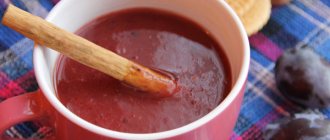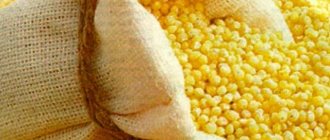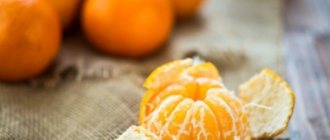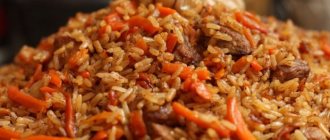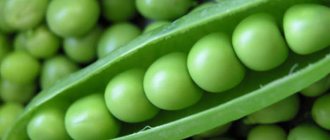The mother's nutrition during breastfeeding often affects the baby. And if the mother eats a variety of foods, while knowing a sense of proportion and monitoring the baby’s reaction, then the child will grow day by day and have good health. Sometimes the temptation to eat something “forbidden” becomes unbearable. What should a nursing mother do? What to do if, for example, she really wants herring? Is it possible or not?
Photo: photl.com
What are the benefits of herring?
Herring is not inferior to red fish in terms of usefulness and quality for the human body.
This fish belongs to the fatty varieties. However, its calorie content does not exceed 250 kcal per 100 grams. During breastfeeding, herring is a good source of healthy vitamins, amino acids and microelements. It contains a large amount of protein, a high content of essential amino acids, B vitamins, PP, vitamins A and D, which are especially useful for strengthening and growing the baby’s bones. It is worth noting that herring is a commercial fish, it is caught in natural conditions, therefore its content of heavy metals and chemical compounds is negligible. This makes it an even more valuable fish.
In what form is it best to eat herring?
You need to introduce fish into your diet gradually, like other foods.
Preferably three months after the start of lactation. During this period, the child’s body is strong enough and the digestive system is ready to absorb meat protein. Herring is a fish of cold seas and the methods of preparing it are very diverse. It can be baked in the oven, or steamed. The most popular option is salted herring. Not a single holiday feast is complete without this dish. Especially in winter. There are many types of pickling. It can be marinated, lightly salted, in brine, with seasonings and herbs, with vinegar and lemon, smoked, in oil. What kind of herring can a nursing mother eat?
It's better to try eating steamed fish first. If the baby’s reaction is normal and there are no changes in stool, then you can safely switch to salted herring. Smoked and pickled herring is naturally not suitable for breastfeeding. When smoked, fish accumulates a lot of carcinogens and contains a lot of salt. Marinated fish contains seasonings and spices that are contraindicated during breastfeeding. The safest option is to buy fresh fish and salt it at home. This way you will be confident in its quality. Lightly salted herring is the best option for a nursing mother. There is not much salt in it, no seasonings. Prepare it yourself.
How can herring be dangerous for a child?
The diet for a woman during lactation should be varied, but certain foods should be excluded from the diet. Despite all its positive qualities, herring is an allergen, and eating it will be dangerous for the baby. The baby may experience problems with the gastrointestinal tract and bowel movements.
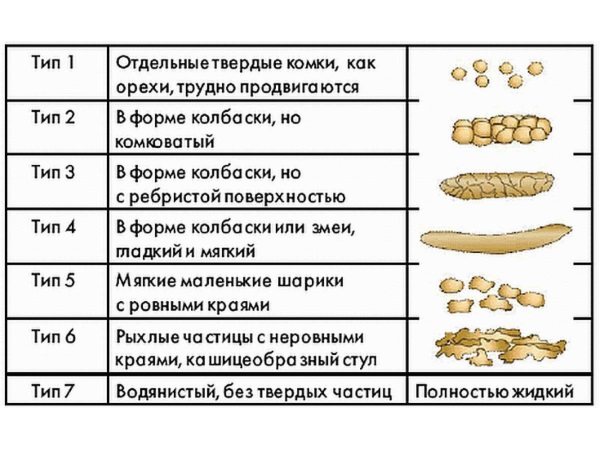
After all, all the substances that enter a woman’s body with food will be present in milk after 4-5 hours. We can confidently say: a child eats with milk what his mother eats.
Therefore, her diet should not consist only of cereals and beef meat, but must be varied, since all the minerals and vitamins the baby needs come into the milk from the food that the woman eats.
Before we say whether a nursing mother can eat herring, let’s figure out how the digestion process goes. All food that a nursing woman takes, after chewing in the mouth, ends up in the stomach. It should be noted that only water, medicines and alcohol are absorbed into the bloodstream. All other products that have not been digested cannot penetrate into the blood, and therefore into the milk too. They pass into the small intestine. This is where food is broken down into different products that are easy to digest. With the help of bile and enzymes, food is digested, transforming into amino acids, fatty acids, and peptides. They enter the baby’s body along with breast milk.
Recipe
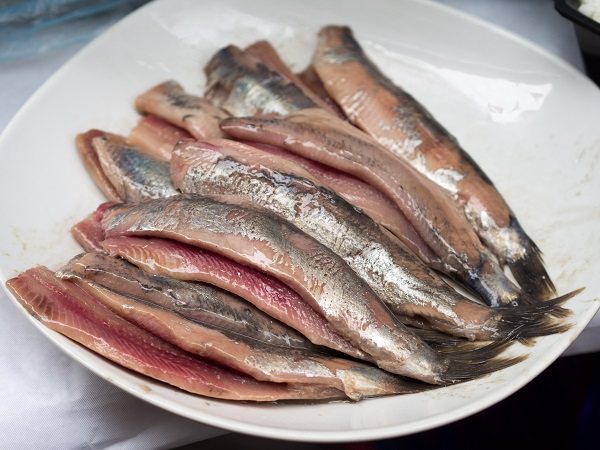
This should be an enamel or glass container. Food-grade plastic dishes are also suitable. 2. Thaw and wash the fish. It is advisable to remove the gills to avoid a bitter taste. For 2 medium fish, use 1 tablespoon of salt, 1 teaspoon of sugar and 2.5 glasses of clean water.
3. To prepare the brine, you need to boil water, add salt and sugar to it and cool to room temperature.
4. Pour brine over the herring and place in the refrigerator. Fish can be eaten after two days.
Is it possible to eat herring while breastfeeding?
WHAT A CHILD CAN EAT AND WHAT CAN’T! PEDIATRIC ADVICE! Proper nutrition is the main component of a child’s life. The baby’s health and his adaptation to environmental conditions depend on how well-balanced his diet is. Show in full..
Newborn children whose mothers have breast milk do not have problems with feeding. To date, nothing more valuable for a newborn child than mother’s milk has been invented. The World Health Organization does not recommend giving breastfed babies under six months of age anything other than breast milk. It has been established that an infant receives all the nutrients necessary for its development and growth from mother’s milk, which even satisfies the baby’s need for water. Therefore, breastfed children can be given water only from six months. If for some reason the mother experiences a shortage or complete absence of breast milk, as well as if there are contraindications to breastfeeding, then the child should receive specially designed infant formula from birth. Under no circumstances should other milk (cow, goat, buffalo, etc.), much less semolina or other products, be given to a child in the first six months of life. Violation of these rules can lead to serious consequences for the health, and sometimes even for the life of a small child. The gastrointestinal tract at this age is not ripe for accepting other foods, and animal milk does not contain enough vitamins, microelements, proteins, fats and carbohydrates necessary to meet the needs of the growing human body and antibodies that are completely alien to humans. Infant milk formulas are highly adapted and adapted. A highly adapted milk formula is best suited for feeding a baby after birth. Its composition is as close as possible to breast milk. There are also medicinal mixtures intended for children with health problems (allergies, digestive disorders, prematurity, lactose intolerance, etc.). However, such nutrition should be prescribed exclusively by a pediatrician. Sometimes it happens that the mother has milk, but in insufficient quantities. Then the baby must be supplemented with formula. In this case, breast milk is given first, and the baby receives the missing amount of food in the form of formula from a bottle with a nipple or a spoon. The hole in the bottle should be very small, otherwise the baby will soon stop sucking the breast, because it involves a certain amount of effort. With mixed or artificial feeding, when the child reaches three months, mixtures with the addition of buckwheat, rice, corn or oatmeal can be introduced into the diet. Such mixtures are sold ready-made in stores or pharmacies. What can a child from 6 months to 1 year eat? Starting from six months, breast milk remains the main food product, but there is a need to expand the diet and introduce additional products (complementary foods). At exactly 6 months, mother’s milk can no longer meet the baby’s needs for calories and micronutrients, especially iron, to ensure his normal growth. Complementary foods are food products that are introduced in addition to breast milk (milk formula, in the case of artificial feeding). In this case we mean porridge or vegetable puree. Where to start, you ask? And this depends on the child’s body weight. If the child is plump or prone to constipation, then the first complementary foods should be given in the form of vegetables, otherwise it is better to start with porridge. In any case, the introduction of a new product should be gradual. You should start with a teaspoon, and increase the amount of complementary foods to 150 - 200 grams over two weeks, with the final replacement of one breastfeeding with complementary foods. The consistency of the food should be in the form of liquid puree. After two weeks, when the child is accustomed to one complementary food, they begin to give a second one, and the child is also gradually accustomed to it. At 6 months the following vegetables are allowed: zucchini, pumpkin, potatoes, cabbage, squash, peas, beans, carrots. You can also give buckwheat, rice, corn, and later oatmeal. Semolina does not contain any substances that are beneficial for a child, so it is simply useless to introduce it into the diet until at least ten months. Barley, pearl barley, and millet porridge can be offered to a child no earlier than one year of age. To improve taste and healthfulness, add vegetable oil (olive, sunflower or corn) to porridge or vegetable puree, starting with three to five drops and adding up to a teaspoon. Thus, by seven months the child should eat complementary foods 2 times a day: porridge and vegetable puree. The rest of the feedings continue to be breastfeeding. Between main meals at 6 months, it is recommended to give fruit in the form of juices or purees, offering the child from 1 teaspoon per day, increasing their amount to 100 grams by the year. Children tolerate apples best. To avoid allergies, buy green or yellow varieties. A baked apple is very beneficial for a child. It’s good if the child likes pear juice or puree, which is allowed for children from the age of six months. But children should eat bananas, peaches, apricots, and nectarines no earlier than seven months, plums and cherry plums - from nine months. All exotic fruits (kiwi, pineapple... the child should try only at 1.5 years old. Give the child a little at first, observe whether an allergic reaction occurs, if not, you can give a larger piece. It would not be amiss to remind that all dishes intended for infants, should be in grated form or in liquid form. Starting from 7 months, the child can eat chicken egg yolk, cottage cheese, butter. The yolk is added to vegetable puree in the amount of ¼ part and by the year it is brought to the whole. The child must receive meat rabbit, turkey or veal. At first it should be puree, at 9 months soufflé, and from 10 months you can cook steamed cutlets or meatballs. It is not recommended to give children waterfowl meat, pork and lamb. It is advisable to eat chicken fillet for a child from one year of age. It is necessary so that the baby receives beef liver and white bread. Offer homemade cakes and kefir when he is 10 months old. Drinks include unsaturated compotes of dried fruits, fresh soft berries, and still water. Currently, there are quite a lot of tea drinks for children in stores. They are intended for children from 2 months, but children's tea from this age can only be given to artificial children. Those who receive breast milk can drink tea only from six months. Sugar and salt in small quantities can be added to dishes from 10 months. If possible, instead of sugar, use fructose - fruit sugar, which does not require insulin for absorption, so it is harmless to the child. Green onions, dill and parsley will be useful. Here is the entire set of products that can and should be fed to children up to one year old. When introducing your child to complementary foods, keep in mind that they are given before breastfeeding, while the baby is hungry, otherwise, after eating his mother’s milk or formula, it will be difficult to persuade him to eat something else. All of the above applies to the nutrition of healthy children. The presence of a particular pathology or disease in a child requires a review of the timing of administration and diet. Taking into account the timing of the introduction of fruits and other products, the mother should always remember the individual characteristics of the child’s body. When offering a new type of food to a child, you need to monitor the reaction of his gastrointestinal tract and skin, and if any pronounced changes appear, cancel this type of product, postponing its introduction for several weeks. Nowadays there is a large variety of baby food on the market that you can feed your baby. However, it is worth using it only from time to time, because the food that a caring mother has prepared herself is much healthier for the baby. What can a child over one year eat? In the second year of life, children's nutrition changes significantly, although the same dishes predominate as before one year. The consistency of food and its quantity changes. However, it is too early to seat the baby at the common table. What new things can be given to a child at this age? Instead of meat, give him fish without small bones 3 times a week. This can be either sea fish (cod, hake, pike perch) or lake fish. Make steamed cutlets, meatballs from it, or simply simmer it in its own juice with carrots and onions. Occasionally, after two years, soaked herring (herring) with a side dish may be given as an appetizer. Sausage and ham are excluded from the menu for children of the second year of life. In the third year, occasionally, instead of meat, it is allowed to eat milk sausages, sausages, low-fat boiled sausage (Doctorskaya, Molochnaya, Ostankinskaya, etc.), lean ham. But such food should not become the rule. The range of vegetables is also expanding. In summer, the child can eat radishes, lettuce, eggplants, sweet peppers, tomatoes, fresh cucumbers, and turnips. In winter it can be sauerkraut. It is useful to give vegetables to your child in the form of salads, grating them and seasoning them with vegetable oil or sour cream. Instead of cereals, periodically cook pasta for your child, combining it with cheese, cottage cheese, meat or vegetables. After two years, you can eat dishes made from flour (pancakes, pancakes). But do not feed your baby sweet pies or shortbread. Let him eat dry cookies, bagels or white bread crackers. For dessert, after the main meal, the child can eat a small amount of marshmallows, jam, and candies. Chocolate in any form is unacceptable until the age of three. First courses can be cooked in unsaturated, low-fat broths without adding any seasonings (bay leaf, fried onions, hot peppers). Until two years of age, the milk that a child drinks should have 3.2% fat content, and after two years of age, you can give him milk with a reduced fat content. Prepare cocoa with milk for your child; this is a very healthy product that children in their third year of life can drink. It is strictly forbidden to give smoked and fried foods to children under three years of age. What can a child from 3 to 7 years eat? At the age of three to seven years, children's activity reaches its peak, so there should be 4 times more carbohydrates in food than proteins and fats. Children of this age can periodically cook fried foods, but it is still better to give preference to oven-baked, boiled and stewed dishes. Avoid adding ketchup, soy sauce, hot pepper, horseradish, vinegar, mustard, adjika, and mayonnaise to them. As a seasoning, you can give children homemade mayonnaise prepared with lemon juice and olive oil. Avoid fatty meats until at least high school age. Use onions, garlic, as well as parsley and dill in moderation. To improve the taste of food, it is good to use fresh fruits, berries and vegetables, use cranberry sauce, lemon juice. If you go out into nature with your whole family, you usually take the opportunity to cook barbecue over a fire. In this case, the child will certainly ask you for a piece. Therefore, make sure that the meat for kebab is not fatty and of high quality. Be sure to fry it well and give your child the piece that does not have a crispy crust on it. It’s very good if the baby eats it with vegetables, drinks it with juice or compote. From the age of 3, a child can eat sandwiches with hard or soft cheese. Include sour cream and cream, as well as yoghurts and cottage cheese in your diet. At this age, offer your child kvass, just be careful - the kvass must be natural, without preservatives or dyes. There are many recipes for homemade kvass that are healthy for the whole family. In addition to kvass, in the fourth year of life, children can be given regular black or green tea. However, you should not get carried away with them; it is especially not recommended to drink meat food with tea. Tea contains tannin, which slows down the absorption of iron from meat in the intestines. Natural coffee should not be consumed by children under 18 years of age. A product such as mushrooms can only be consumed by children at school age. Mushrooms are healthy, but difficult to digest, so it is not recommended for preschoolers to eat them. After age 7, normal healthy eating guidelines should be followed, similar to those for adults. You can end this article with these words: “everything is good in moderation.” Let the child eat everything, but little by little. Of course, provided that he is healthy. If there are chronic diseases, the child’s diet will be significantly changed by the doctor. Pediatrician S.V. Sytnik
How to choose quality herring

Their absence indicates low-quality fish. The eyes should be transparent, and the skin should be silver-blue with reddish fins. When choosing salted herring, don’t be shy to ask to smell it. Freshly salted herring has a distinct fishy smell, without any extraneous unpleasant odors; do not take “smelly” fish. If possible, you can check its freshness by lightly poking the skin with your finger.
If there is a dent, the fish is not fresh. In appearance, it should be bluish in color without a rusty coating. The gills must be intact.
The eyes are in place.

